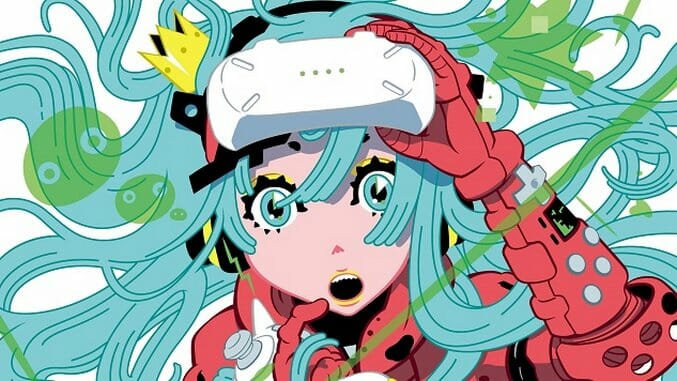
Last month I got on a plane and flew to Japan, which is not particularly close to Atlanta, the American city that I live in. I flew to Japan in search of videogames, an artform as inextricably linked with the country as Noh or sumo. I went in search of videogames, and yes, I found them. I found the videogames in Japan. They were exactly where I knew they’d be, a big convention hall called Makuhari Messe, where the Tokyo Game Show is held every year. I knew the videogames would be there because they don’t call it the Tokyo Game Show for nothing. What I didn’t know was the language or the alphabet or that my hotel was a good ninety minute train ride from anything of interest other than Makuhari Messe. I know how to plan things.
I also found them because videogames are everywhere in Japan. I couldn’t walk a block without seeing Yo-Kai Watch ads. Every convenience store (I went to a lot of convenience stores) had ads for games and kiosks where customers could order them. Every ad on every car on one specific subway train I got on was for Final Fantasy XV or its film spin-off. The commercials for Japan’s official tourism bureau were designed to look like levels from the original Super Mario Bros. It’s possible those last two were specifically targeted to the Tokyo Game Show, like how much of downtown Los Angeles’s outdoor ad space is taken over by videogame ads around the time of E3. But that doesn’t explain the kiosks at Lawson and 7-11, the game-related clothes and accessories I saw everywhere, the 3DS handhelds I saw on almost every train, or the gamer explosion that is Akihabara. In Japan videogames aren’t just a hobby or a pastime: they’re part of the culture. And for four days a year, the epicenter of that culture is the Tokyo Game Show.
Makuhari Messe is a series of massive silver buildings nestled near the bay in Chiba, a city just south of Tokyo. Its two main buildings are laid out like a giant T, but instead of connecting with each other they’re split up by a round, squat arena that resembles a giant robotic turtle. Nearby sits Chiba Marine Stadium, the home of the Chiba Lotte Marines baseball team, and beyond that Tokyo Bay. It’s not unusual for Americans to fetishize Tokyo as some kind of futuristic wonderland, perhaps because echoes of its architecture can be found in some of our most enduring science fiction films, but even those trying to avoid such easy comparisons will be hard-pressed to not think of massive crashed spaceships repurposed as exhibition halls for car shows and videogame conventions when looking at Makuhari Messe. Compared to the Brutalist industrial blight of most American convention centers, Makuhari Messe genuinely looks sleek and futuristic on the outside.
Inside, on the floor of Makuhari Messe, the Tokyo Game Show felt like any other big gaming convention. Crowds of people swarmed around booths that ranged from the elaborate to the spartan in hopes of getting their hands on games that wouldn’t be out for weeks or months yet, as companies went to varyingly desperate lengths to get as many of those people into their booths as possible. It had the same hyperstimulation, the same cacophony, the same circling of similar convention center halls, the same shuffling from one appointment to the next. The same waiting in line when an appointment wasn’t possible. The ground-level toil of videogame trade shows cross all national and cultural barriers.
When I was focused on the job it was easy to overlook that the din was in a language that I didn’t know, one different than what I’d hear at E3 or GDC. That the signs I passed were largely in an alphabet I couldn’t read, that the magazines and brochures I was handed and didn’t look at were almost completely illegible to me. It was easy to forget that I was in Japan. And then, when the day would end at 5 PM, a Muzak version of “Auld Lang Syne” would play over the convention center speakers, and three dozen Japanese women in matching uniforms would dance on a stage holding Playstation logos, and the cartoonish Power Pro baseball mascot would march by with the Chiba Lotte Marine and the Orix Buffalo and other Nippon Professional Baseball mascots, and I’d remember where I was.
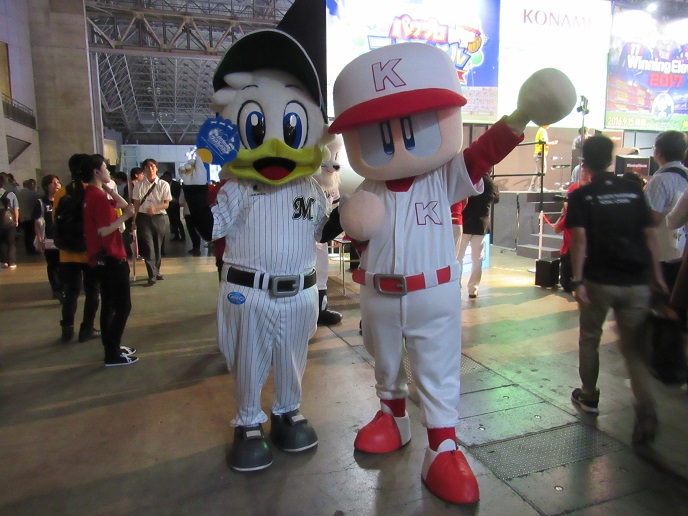
I’d remember where I was when I saw small stations for mobile games with names like Hello! Farm Warrior and Cinderella Please Help!. I’d remember where I was when I walked past a woman with a blue wig and sparkly, anime-style dress passionately playing the violin over a prerecorded prog rock track at the Sony Xperia booth. I’d remember where I was whenever I came anywhere near the booth for Zombie Hunter School Girls, where demo stations were arranged to make it look like players were staring up the skirts of school girls, and which hosted periodic live stage shows consisting of a man in a suit and a woman in cosplay ripping school girl outfits off underwear models while an audience full of men roared like a sitcom laugh track.
Around the corner from that booth was a wrestling ring that featured matches from Dramatic Dream Team, the cult Japanese promotion best known in America for its ludicrous Ironman Heavymetalweight Championship, which has changed hands almost 1200 times over the last 16 years, and has been held at different points by a Dachshund, a glass of beer, three different ladders, and Vince McMahon’s star on the Hollywood Walk of Fame. The six-man tag match I watched featured one of DDT’s biggest stars, Yoshihiko, an inflatable sex doll that’s treated as a real wrestler by its opponents. Yoshihiko pulled off piledrivers and hurricanranas on his opponents, and even flew into the ring at the last second to break up a pinfall. Of course Yoshihiko got the pin at the end.
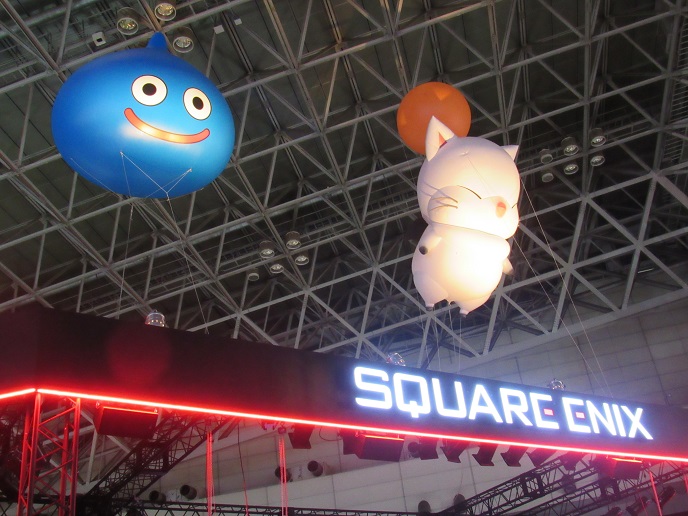
This glitz and showmanship was like a concentrated shot of Japanese pop culture, or at least the aspects of it that border and overlap with Japanese videogame culture. Japan didn’t invent the videogame, but it’s possible the medium never would’ve become as ubiquitous as it is if it wasn’t for early Japanese developers like Nintendo, Sega, Capcom, Konami, Taito and their peers. When the American games industry collapsed in the early 1980s, it was Japan that brought it back to life, shepherding it to previously unheard of success. And although the Japanese industry is in the midst of an extended decline, that history was palpable at TGS, from the merchandise festooned with classic characters and logos that could be bought at booths throughout the show, to the prominence of the latest versions of such long-running Japanese hits as Final Fantasy and Resident Evil.
I wasn’t just there to get ponderous about history or gawk at Japan’s gaming culture like a tourist, though. I was there to actually see and play games. And at this year’s TGS, that largely meant having to deal with virtual reality.
Virtual reality was the theme of this year’s show. The event’s motto, “Press Start to Play the Future,” was emblazoned on banners, posters and shirts alongside a drawing of a woman, wide-eyed with awe, removing a VR headset. Booths for VR games and apps could be found in every hall, with software from some of the biggest and oldest names in videogames, to lesser-known companies hawking idiosyncratic VR-driven one-offs, to independent developers in the “Indie Game Area.” There were VR pop stars, VR scuba divers, VR horse riding and surfing and archery. There was, of course, VR dating, where players flirt (and possibly more) with a variety of attractive girls or boys. It was a glimpse into a so-called future that was already very much the present, with the Oculus Rift, HTC Vive, Samsung Gear and other headsets already in homes across the world, and Sony’s Playstation VR only a few weeks away when the show was happening.
I’ve introduced a Playstation VR into my home since returning from Japan. When I was at TGS, though, my only experiences with modern-day VR were at similar trade shows. I’d worn the headset at E3s and GDCs in the past, and my excitement over the tech somehow decreased with every demo. What felt potentially huge in 2013 grew less impressive with each experience, even as the technology became more advanced. The major drawbacks to virtual reality—the expense, the physical discomfort of wearing the necessary gear, the greater discomfort from motion sickness and headaches—became more apparent every time I tried it out. I pretty much knew virtual reality was not a thing for me well before I ever walked into the Tokyo Game Show.

Given that trajectory, I have to label my VR explorations at Makuhari Messe a surprise, then. Not because they convinced me that this was legitimately the future of videogames—it could be a part of that future, and probably has a better shot of sticking around than 3D gaming, but will probably remain only a small part, and won’t replace the traditional TV and controller set-up—but because, for the first time, it was exactly what I expected. When it worked, as with Thumper VR, Rez Infinite, or a Japanese game whose name escapes me where I had to summon Studio Ghibli-style forest spirits to help me fight off demons, it was a potent extra tool in the kit of games that were successful for reasons other than virtual reality. When it didn’t work, as with almost every other VR game I messed around with, it was at best a distraction, at worst an immediate cause of sickness, and mostly just an unnecessary gimmick. My expectations were perfectly calibrated after a handful of VR excursions. Perhaps, as the technology continues to get more advanced, more refined, and, hopefully, more affordable, virtual reality will start to justify its existence. Nothing I saw at TGS convinced me that this supposed future was anything more than a boondoggle, though.
My last day at TGS was one of two that I devoted to virtual reality. What struck me the most, and sticks with me still to this day, couldn’t be found in any headset, though. Unlike most of the major American videogame trade shows, TGS opens itself up to the public on its last two days. Most press I talked to planned on avoiding the public days, when hundreds of thousands of fans pour into Makumari Messe, making it hard just to walk anywhere, much less get any work done. But being my first time at the show, and probably the only time I’ll ever be there, I knew I couldn’t miss this spectacle.
The sea of people entering and leaving the main convention hall was clearly larger than at almost any event I’ve ever been to in America—bigger than any football game, music festival or Wrestlemania. The only thing I can compare it to is Centennial Park in Atlanta during the 1996 Olympics. There was basically one long, contiguous chain of humanity from the Kaihim Makuhari train station, down the few blocks to the convention center, into the entrance to the show floor, and then back out the hall’s exit, across two walking bridges, down two other blocks and back into the train station. It was like a circuit that had to stay completed to keep the entire show running.
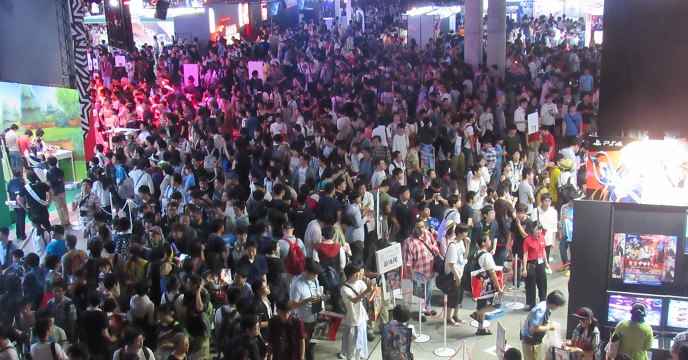
That crowd did make it very hard to get any actual work done. Fortunately that drove me to find something I otherwise might have glossed over between appointments. By sticking around on that public day I was able to witness the cosplay area, where dedicated cosplayers model their costumes on the show’s last two days. I am normally not a cosplay fan. Cosplay is one of the many videogame distributaries that flow into the wider concept of “gaming culture” that I simply don’t care for. It’s cool that people are into it, that they spend so much time, effort and money to create these amazing costumes, but it’s not a thing that interests me.
I still stand by that. I didn’t suddenly learn to embrace cosplay because of one trip to Tokyo. I did come home with an even greater appreciation of the art and skill that goes into making these elaborate costumes, though. TGS put a spotlight on the largest and most impressive collection of cosplay I’ve ever seen, from detailed recreations of robots and full-body suits of armor, to groups of friends who collectively embodied the entire casts of games from series like Phoenix Wright and Final Fantasy. Maybe because the Japanese invented cosplay, maybe because they have a longer history of making these costumes and more resources that cater specifically to the hobby, but the cosplay I saw in Tokyo swayed me in a way its American counterparts never have. Something I easily dismiss at American events felt like a crucial part of this show, and a pivotal part of this culture—something that has to be seen in person, and not just read about or watched online, to truly understand the significance of what games mean to their fans in Japan.
For an American, that glance into Japan’s gaming culture is the most fascinating thing about the Tokyo Game Show. Japan didn’t just save the games industry—its fans created the entire concept of gaming culture, and that culture is what TGS exists to promote and celebrate. Normally I might argue whether the idea of a gaming lifestyle is a good thing or not—how, in America, the fans of games often feel like the biggest impediments to the growth and development of games—but at TGS the connection between games and fans was unmistakable, powerful and a distinct part of Japanese culture.
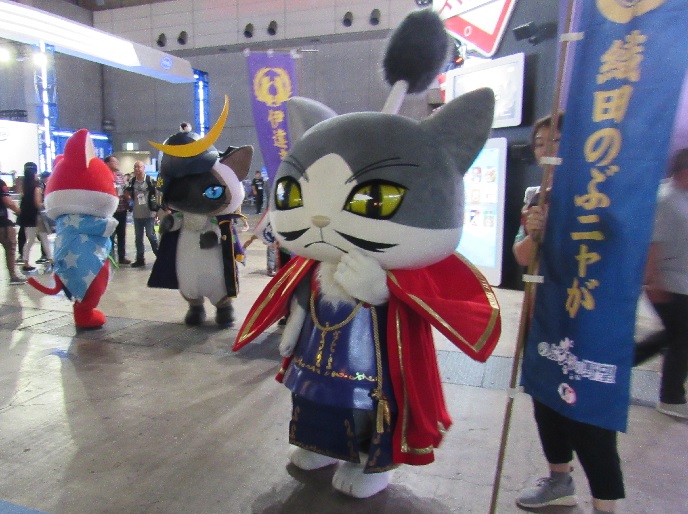
Japanese fans should feel proud of that culture. They should feel a special connection to those games that have endured for decades, that have left indelible marks not just on Japanese pop culture but throughout the world, and to the industry that created those games and was also created by those games. Japan didn’t invent the videogame, but no country or culture has had more of an impact on the videogame, or been more impacted by videogames. It’s telling that when American fans dress up in cosplay, or wear clothing or accessories based on games, or obsess over the minutiae of specific games in a way similar to comic book or sci-fi fans, it’s usually with Japanese games. Japanese gaming culture comprises the bulk of all gaming culture, both in Japan and abroad.
That deep relationship with games casts TGS in a very different light from the American shows I have repeatedly compared it to. E3 is transparently a giant commercial. PAX is a giant commercial that tries to pass itself off as a celebration of videogames and the people who play them. By splitting itself up into press-only and public days, and by mostly focusing on the Japanese industry, TGS fulfills both the promotional aims of E3 and legitimately accomplishes what PAX only claims to attempt.
On my last day at TGS I walked past Sega’s booth for the final time. Hanging above the demo stations was a large banner for Yakuza 6. Despite being huge in Japan, the Yakuza games are niche releases in America, regularly coming out in the States in small batches and years after their Japanese release, if at all. The banner was dominated by the face of Takeshi Kitano, AKA Beat Takeshi, a famous Japanese comedian and filmmaker who is unknown in America outside of cinephiles and fans of Japanese culture, who plays a character in the game. In a crossover with another unique Japanese subculture based on an American artform, six of the top wrestlers from New Japan Pro Wrestling also appear as characters in Yakuza 6. It’s a distinctly Japanese game with few commercial prospects outside the country and that very few outside Japan could ever hope to truly understand, and it had one of the bigger booths and some of the longest lines at TGS.
As I walked through Makuhari Messe for the last time, Takeshi Kitano’s face glowering down at me, Yakuza 6 highlighted how much TGS felt like any other gaming show I’ve been to, but also how fundamentally different it was, and how videogames are interlaced with Japanese culture in a way no other country can match. I found the videogames in Japan, and in them I found a part of Japan itself.
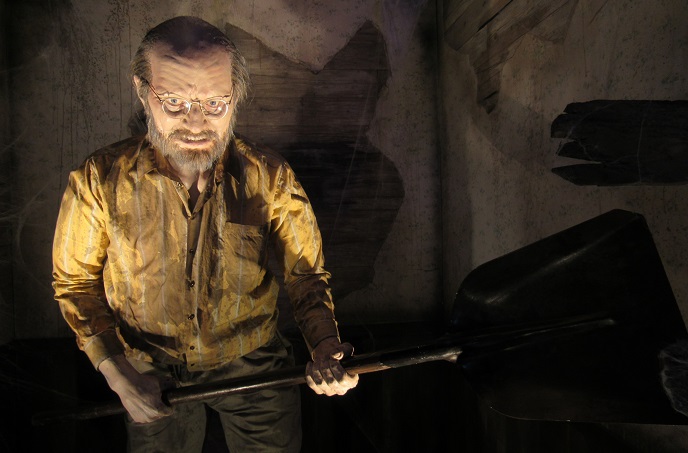
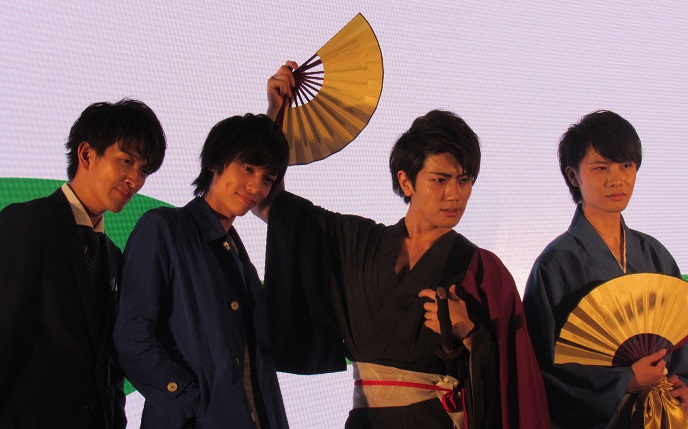
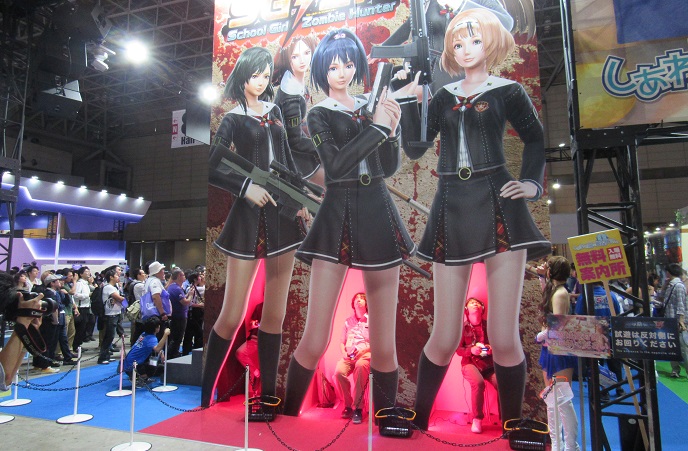
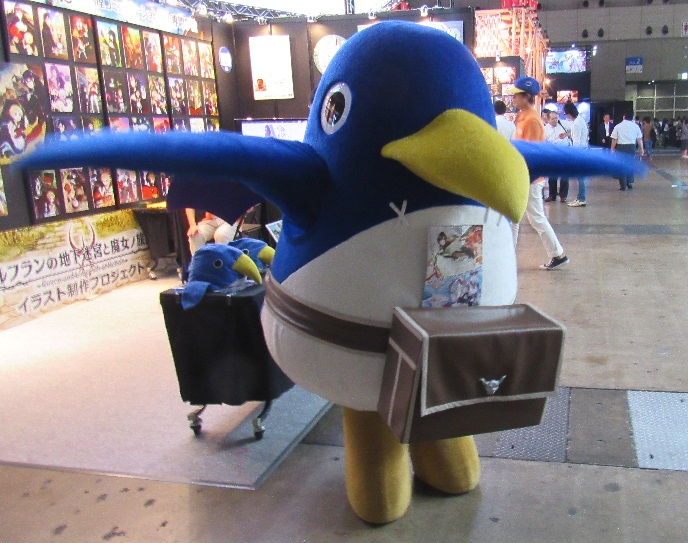
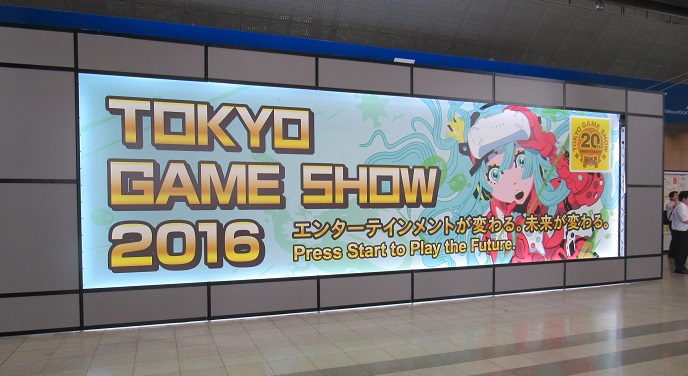
Garrett Martin edits Paste’s games, comedy and wrestling sections. He’s on Twitter @grmartin.
